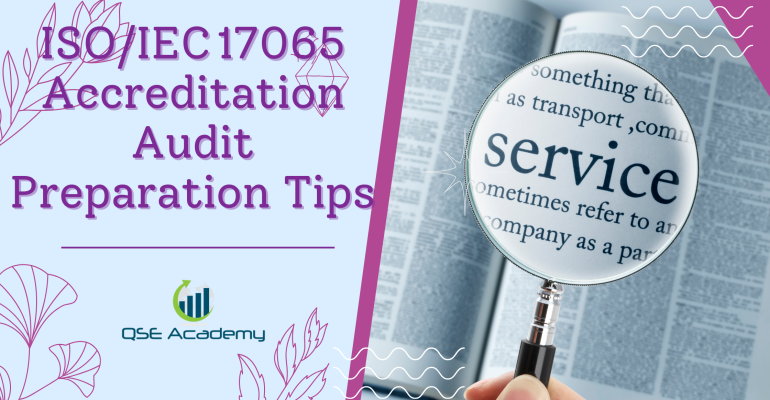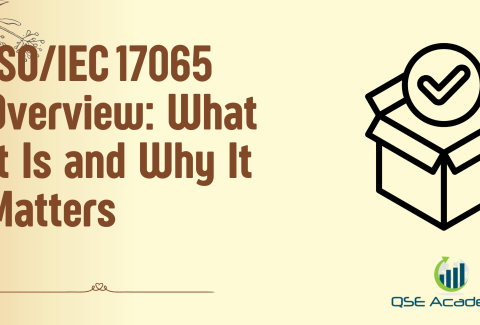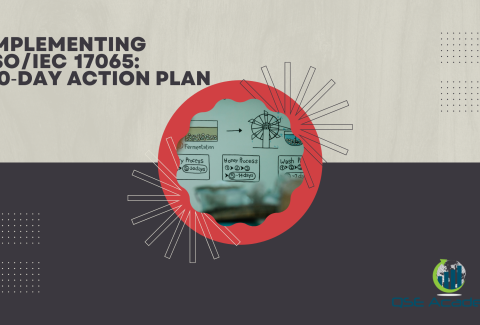ISO/IEC 17065 Accreditation Audit Preparation Tips
How to Prepare for an ISO/IEC 17065 Accreditation Audit with Confidence
Every time I work with a certification body gearing up for an ISO/IEC 17065 accreditation audit, the same question pops up: “Are we really ready?” And honestly, most teams aren’t sure until an assessor is already sitting across the table asking for records. That uncertainty is exactly what this article is here to eliminate.
In my experience guiding CBs through initial accreditation, reassessments, and surveillance cycles, the organizations that pass smoothly share one thing in common — they prepare with intention. They understand the audit flow. They anticipate focus areas. And they make sure the documentation tells a clear, consistent story.
In this guide, I’ll walk you through practical preparation tips drawn from real accreditation assessments. You’ll learn where assessors dig the deepest, how to present evidence effectively, and what mistakes to avoid so your audit feels predictable instead of stressful.
Understanding the ISO/IEC 17065 Accreditation Audit Process
If you’re new to accreditation, the process can feel overwhelming — document review, on-site assessment, witnessing, interviews, record examinations. Each component has a purpose, and assessors follow a strict structure based on the standard.
Here’s what I’ve noticed: external assessors don’t just check compliance. They test effectiveness. They don’t just read procedures — they verify whether your team follows them consistently. They don’t accept answers at face value; they ask for proof.
Here’s what to expect:
- Document review before or at the beginning of the audit
- Interviews with evaluators, decision-makers, quality managers
- Witnessing of evaluation/testing activities (if applicable)
- Objective evidence checks for every clause
- Follow-up discussions on potential findings
Pro Tip: Review your accreditation body’s pre-assessment pack. They usually list the exact areas they’ll sample. You’d be surprised how many CBs skip this and get caught off guard.
Common mistake: Assuming the accreditation audit will run like an internal audit. External assessors go far deeper than your internal team ever will.
A few years ago, a CB I supported felt “fully compliant” based on their internal audit. But when the accreditation assessor arrived, half of the scheme documentation didn’t map correctly to the certification process. It resulted in three major findings. The issue wasn’t the work itself — it was the lack of alignment in documentation.
Documentation Readiness for ISO/IEC 17065 Accreditation
Let’s be honest — documentation is where most accreditation pain points come from. Not because the documents are missing, but because they’re inconsistent, outdated, or scattered across teams.
You’ll want the following documents easily accessible:
- Management system description or quality manual
- Procedures for evaluation, decision-making, impartiality, complaints, appeals
- Certification schemes (with rules, criteria, sampling plans)
- Evidence of training and competency
- Evaluation/testing records
- Certification decision records
- Impartiality risk assessments
- Internal audit reports
- Management review results
Pro Tip: Build a “ready folder” — a curated set of documents linked directly to clauses. It saves hours of scrambling during the audit.
Common mistake: Multiple versions of the same scheme floating around. I’ve seen assessors flag major findings simply because staff were using outdated versions.
One CB I worked with had three versions of the same PPE certification scheme stored in different folders. The assessor didn’t need 10 minutes to detect the inconsistency.
Competence & Training Preparation for ISO/IEC 17065 Audits
One of the toughest areas in ISO/IEC 17065 assessments is competence. Assessors want proof that staff are qualified — not just experienced, but qualified for the specific scheme they’re working on.
Here’s what auditors typically check:
- Competency matrix mapped to roles
- Training records (with outcomes)
- On-the-job evaluations
- Witnessing reports (if relevant)
- Qualification criteria for evaluators and decision-makers
Pro Tip: Map competencies per scheme. You can’t rely on generic qualifications for highly technical product categories.
Common mistake: Relying on job descriptions as evidence. A job description says what someone should do — not whether they can actually do it.
I once supported a CB where the evaluator’s training certificate had no description of assessment outcomes. The assessor questioned the competence immediately. Avoid that by ensuring all records show defined learning results or performance evaluations.
Impartiality, Confidentiality & Conflict of Interest Controls
If there’s one area assessors always dig into, it’s impartiality. They want to see real controls, real evidence, and real mitigation actions — not declarations or signatures alone.
You need:
- Impartiality risk assessment
- Committee minutes
- Conflict-of-interest declarations
- Mitigation actions tracked and reviewed
- Evidence of independence in decision-making
Pro Tip: Create a one-page impartiality matrix. It visually summarizes risks, controls, and monitoring actions. Assessors love it because it shows maturity and transparency.
Common mistake: Treating impartiality assessments as annual tasks. Risks evolve. Controls must follow.
I worked with a CB that had great documentation but zero minutes from impartiality committee meetings. The assessor wrote a finding within the first hour.
Scheme-Specific Preparedness for ISO/IEC 17065
This is the part many certification bodies underestimate. ISO/IEC 17065 requires that each certification scheme be complete, logical, and aligned with evaluation activities. A scheme is not just a document — it’s the heart of the certification process.
Assessors look for:
- Defined evaluation methods
- Sampling strategies
- Criteria for certification decisions
- Technical competence requirements
- Surveillance rules
- Product-specific controls
Pro Tip: Prepare a simple summary sheet per scheme. Highlight evaluation steps, decision criteria, and surveillance processes. It saves valuable time during the audit.
Common mistake: Copying scheme templates from ISO/IEC 17067 without tailoring the specifics. Schemes must match your real operations.
I once saw a CB running two different product categories under a single generic scheme. It caused inconsistencies in evaluation reports — and resulted in major corrective actions.
Internal Audit & Management Review Alignment
Here’s where organizations can fix issues before an assessor finds them. Internal audits and management reviews must reflect real performance, not just compliance statements.
Look at:
- Internal audit results
- Effectiveness checks
- Evidence of corrective actions
- Management review discussions
- Decisions made on risks, complaints, and improvements
Pro Tip: Re-audit high-risk areas identified in previous internal audits. It shows continuous improvement and reduces surprises.
Common mistake: Internal audits that only confirm documentation exists — without verifying whether the process works.
I helped a CB perform a quick re-audit before an accreditation assessment. They caught six major gaps that would have become findings. That alone changed the outcome of their accreditation.
On-Site Accreditation Audit Behavior & Communication Tips
Even the best documentation can be undermined by unprepared staff. I’ve seen strong systems crumble when staff give inconsistent answers or “guess” under pressure.
Here’s how to avoid that:
- Designate subject-matter leads for each clause or process
- Practice Q&A sessions before the audit
- Keep answers clear and concise
- Show the evidence — don’t debate it
- Avoid guessing at all costs
Pro Tip: A calm, concise answer backed by evidence is more effective than a long explanation.
Common mistake: Letting anyone answer any question. It creates confusion and amplifies errors.
A decision-maker I worked with once gave three different explanations for the same process. The assessor expanded sampling immediately. That could have been avoided with a simple briefing.
FAQs – ISO/IEC 17065 Accreditation Audit Preparation
How long does an ISO/IEC 17065 accreditation audit take?
Usually 2–5 days depending on your certification scope, scheme types, and staff count. Complex schemes can require multiple assessors.
What areas cause the most nonconformities?
Impartiality, competence evidence, decision-making traceability, and incomplete documentation of evaluation activities.
Is a pre-assessment worth it?
Absolutely. It identifies gaps early and reduces the pressure during the actual accreditation audit.
Conclusion: Strengthen Your Readiness for ISO/IEC 17065 Accreditation
Preparing for an ISO/IEC 17065 accreditation audit doesn’t have to feel overwhelming. With the right approach — focused documentation, clear evidence, competent staff, strong impartiality controls, and scheme-specific readiness — you can walk into the audit feeling confident and organized.
I’ve seen certification bodies transform their audit outcomes simply by following these preparation strategies. If you want a smoother, more predictable accreditation journey, start building your preparation framework now — and make every document and process work for you when it matters most.
Melissa Lavaro is a seasoned ISO consultant and an enthusiastic advocate for quality management standards. With a rich experience in conducting audits and providing consultancy services, Melissa specializes in helping organizations implement and adapt to ISO standards. Her passion for quality management is evident in her hands-on approach and deep understanding of the regulatory frameworks. Melissa’s expertise and energetic commitment make her a sought-after consultant, dedicated to elevating organizational compliance and performance through practical, insightful guidance.









